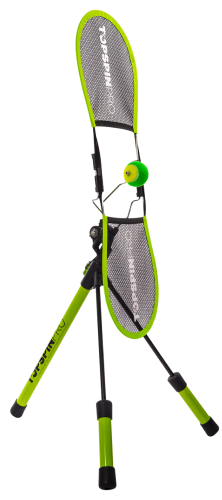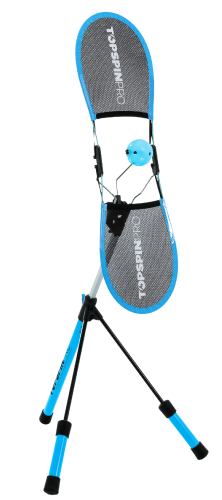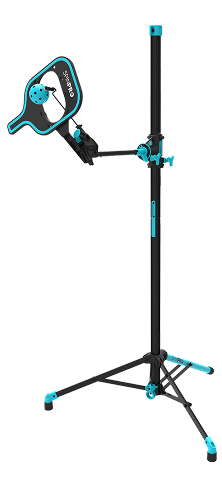 Photo: unsplash.com
Photo: unsplash.com
What we'll cover in this article:
Stay in the loop!
Want to be updated when we publish? Be sure to sign up for our newsletter. No spam, we promise!
What Is a Forehand in Pickleball?
The forehand is one of the most important shots in pickleball. It involves using your dominant hand and arm. The palm (fore) of the hand leads the paddle toward the ball. You'll hit the backhand from the opposite side of your body. This time with the back of the hand leading the paddle to the ball (on a one-hander).
How Do You Hit A Forehand In Pickleball?
Preparation
Begin in the 'ready position'. Your feet should be shoulder-width apart, knees slightly bent, weight on the balls of your feet, and paddle up ready to react.
The Backswing
As you see the ball coming, rotate your shoulders and hips to the side while bringing your paddle back, ideally slightly higher to begin with. Keep your non-playing hand on the paddle until your shoulders turn and then let go pointing it out to the ball.
The Contact Point
Step forward with your leading foot (non-dominant), and rotate your hips and shoulders back towards the net. Contact the ball out in front of your body so your weight can shift through the ball. Hips and shoulders should be facing back at the court at contact.
The Follow-Through
Your forehand swing should naturally keep accelerating through to the finish position. Try not to decelerate and stop short. This will reduce your power. You should finish with your paddle high and your body facing the court. A good rule of thumb is to point your elbow (at the end of your swing) where you would like the ball to go. This is easiest if you land your paddle over your shoulder.
What Forehand Grip Should I Use In Pickleball?
Continental Grip
Most players find the continental grip easiest to begin with. It allows you to hit all shots easily without changing grip. To find it, place the base knuckle of your index finger on bevel number 2.
Here’s a clip showing you how to find a Continental Forehand grip:
Eastern Forehand Grip
Most players find the 'Eastern Grip' comfortable for executing forehand shots. Imagine shaking hands with your paddle, and that's pretty much your Eastern grip. Your base knuckle should be on the 3rd bevel of your pickleball paddle. It’s easier to generate a good mix of topspin and power using the Eastern forehand grip than the continental. You do, however, need to get used to shifting your grip.
Here’s a clip showing you how to find an Eastern Forehand grip:
How Do I Hit A Pickleball Topspin Forehand?
Why Do We Need Topspin In Pickleball?
We use topspin because of its useful effect on the both the flight path of the ball and its resulting bounce. This is called the Magnus Effect which causes the ball to dip dramatically and much sooner than if the same shot is hit flat. This means we can hit the ball much harder or higher and it will still land in. We can also use this resulting dip to drop the ball short and into awkward areas for our opponent. Think topspin 3rd shot drop. For more in depth info on topspin you can read our article: Pickleball: Topspin 101
The Backswing
Your swing shape should be the same as the basic forehand but you need to ensure your forward swing path is steeper. Think starting from your knees and going up to your shoulders. This upward swing path is the key to generating topspin.
The Contact Point
Roll the paddle up the back of the ball from the top of the paddle to the bottom. The longer the ball rolls down the paddle, the more spin you will get. The faster you move the paddle, the more spin you will also get.
The Follow-Through
The follow-through should be the same as the basic swing, up high with your elbow pointing toward your target area.
Here is how it should look:
How Do I Hit A Pickleball Slice Forehand?
The slice forehand imparts backspin on the ball, causing it to slow down and bounce low, potentially throwing off your opponent's timing. This is a great shot to use when moving up the court. You can float it deep to your opponent's feet, giving you time to get up to the kitchen.
The Backswing
Unlike the topspin, the backswing for a slice should be high to low. Start with your paddle at shoulder height.
The Contact-Point
The opposite of topspin. Your paddle should now travel down the back of the ball. The faster you move your paddle, the more slice you will have.
The Follow-Through
Your follow-through should be short, out in front, and finish lower than the contact point, reflecting the downward striking motion.
Here are two ways you can practice on the TopspinPro:


How Do I Hit A Power Forehand In Pickleball?
The main ways to get more power on your pickleball forehand is to step into the ball and get your body weight forward, accelerate your paddle faster, and keep a loose grip at the bottom of the handle.
Here’s a video showing you how to get more power with the correct grip:


Pickleball Forehand Practice Drills
The key to mastering both the topspin and slice forehand is consistency. Here are some drills to help you practice:
Wall Drills
Hit forehands against a wall, alternating between flat, topspin and slice. Focus on correct technique and consistency rather than power.
Cross-court Drills
With a partner, hit crosscourt forehands, aiming for a specific target area. Mix up your spin.
Consistency Drills
For this drill, you need a partner. The aim is to hit as many consecutive forehand shots as you can without making a mistake. This drill is great for improving your control and consistency.
Control Drills
Set up targets (like cones or buckets) on the court and practice hitting them with both topspin and slice forehands. This helps improve your accuracy and paddle control.
Remember that these drills are meant to help you focus on various aspects of your forehand technique. Don't rush to increase the power of your shots. Instead, focus on maintaining proper form, making clean contact, and being consistent with your shot placement.
In Conclusion
Mastering the forehand shot, both topspin and slice, will elevate your pickleball game significantly. It requires practice and patience, but with this guide, you now have the knowledge you need to execute these shots effectively. Remember to always start with a solid grip and stance, and concentrate on the ball’s point of contact and your follow-through.
As you improve your forehand technique, you'll find yourself hitting more winners and dictating the game's pace more often. So, arm yourself with your paddle, get on the court, and start practicing that next level forehand! Best of luck!
FAQs
-
What is a forehand in pickleball?
The forehand is one of the most important shots in pickleball, using your dominant hand and arm. The palm of your hand leads the paddle toward the ball.
-
How do you hit a forehand in pickleball?
Start in the ‘ready position’ and rotate your shoulders and hips as you bring your paddle back. Step forward with your leading foot, contact the ball out in front, and follow through with your paddle high.
-
What forehand grip should I use in pickleball?
Most players start with the continental grip, placing the base knuckle of the index finger on bevel number 2. The Eastern forehand grip, with the base knuckle on the 3rd bevel, is also popular for generating topspin and power.
-
How do I hit a pickleball topspin forehand?
Use a steeper forward swing path, starting from your knees and going up to your shoulders. Roll the paddle up the back of the ball and follow through with your elbow pointing toward your target.
-
How do I hit a power forehand in pickleball?
To get more power, step into the ball, accelerate your paddle, and keep a loose grip at the bottom of the handle. Focus on body weight transfer and paddle speed.
Links Related to This Article
- The Health Benefits of Playing Pickleball
- Why You Need Topspin In Pickleball https://topspinpro.com/blog/topspin-in-pickleball-and-why-should-we-use-it/
Enjoyed this article?
Be sure to sign up for our newsletter and we'll keep you up to date about new posts



